rongsheng cease shipbuilding factory
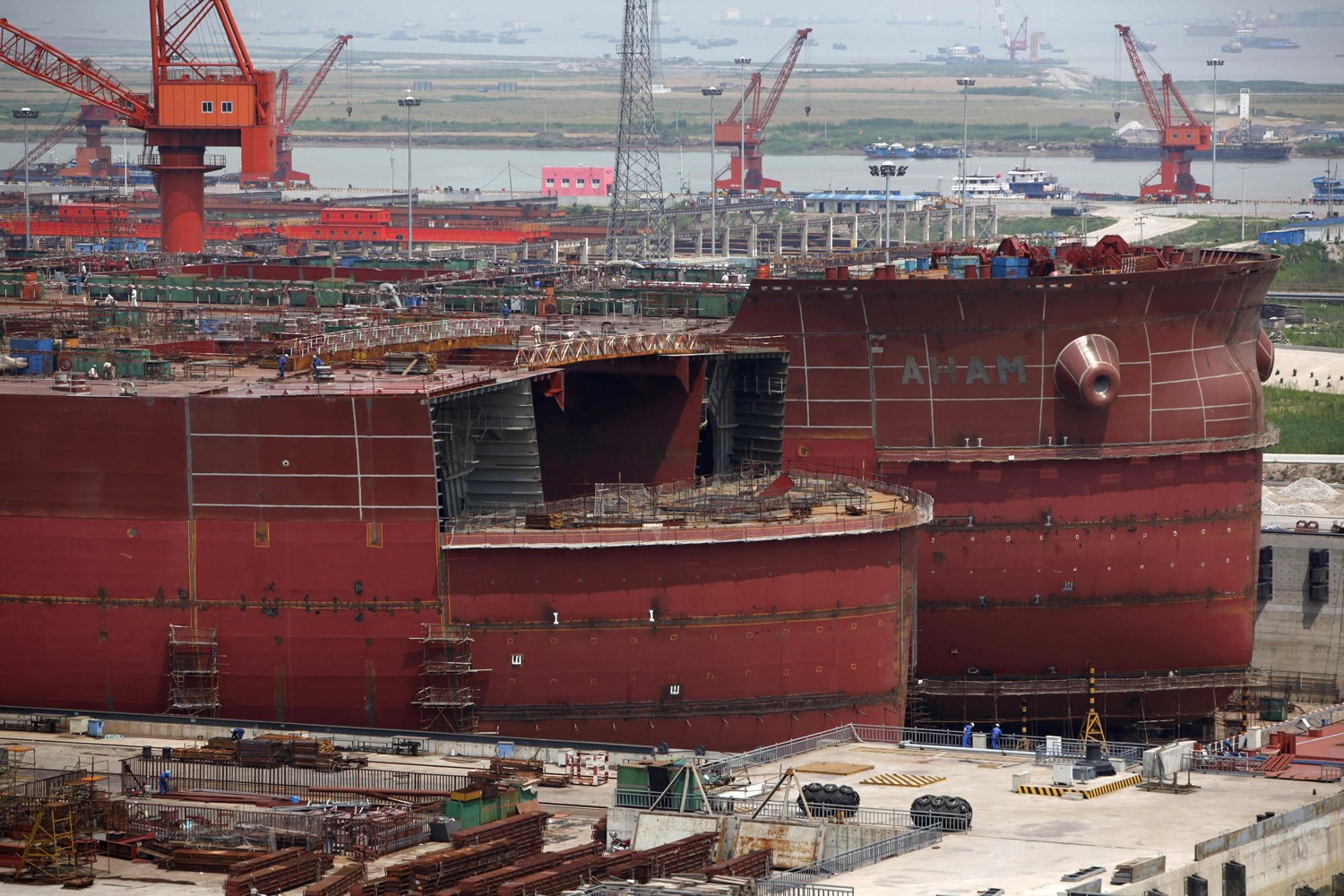
RUGAO, China/SINGAPORE (Reuters) - Deserted flats and boarded-up shops in the Yangtze river town of Changqingcun serve as a blunt reminder of the area"s reliance on China Rongsheng Heavy Industries Group, the country"s biggest private shipbuilder.A view of the Rongsheng Heavy Industries shipyard is seen in Nantong, Jiangsu province December 4, 2013. REUTERS/Aly Song
The shipbuilder this week predicted a substantial annual loss, just months after appealing to the government for financial help as it reeled from industry overcapacity and shrinking orders. Rongsheng lost an annual record 572.6 million yuan ($92 million) last year, and lost 1.3 billion yuan in the first half of this year.
While Beijing seems intent to promote a shift away from an investment-heavy model, with companies reliant on government cash injections, some analysts say Rongsheng is too big for China to let fail.
Local media reported in July that Rongsheng had laid off as many as 8,000 workers as demand slowed. Three years ago, the company had about 20,000 staff and contract employees. This week, the shipbuilder said an unspecified number of workers had been made redundant this year.
“Without new orders it’s hard to see how operations can continue,” said one worker wearing oil-spattered overalls and a Rongsheng hardhat, adding he was still waiting to be paid for September. He didn’t want to give his name as he feared he could lose his job.
“Morale in the office is quite low, since we don’t know what is the plan,” said a Rongsheng executive, who declined to be named as he is not authorized to speak to the media. “We have been getting orders but can’t seem to get construction loans from banks to build these projects.”
While Rongsheng has won just two orders this year, state-backed rival Shanghai Waigaoqiao Shipbuildinghas secured 50, according to shipbroker data. Singapore-listed Yangzijiang Shipbuildinghas won more than $1 billion in new orders and is moving into offshore jack-up rig construction, noted Jon Windham, head industrials analyst at Barclays in Hong Kong.
Frontline, a shipping company controlled by Norwegian business tycoon John Fredriksen, ordered two oil tankers from Rongsheng in 2010 for delivery earlier this year. It now expects to receive both of them in 2014, Frontline CEO Jens Martin Jensen told Reuters.
Greek shipowner DryShips Inchas also questioned whether other large tankers on order will be delivered. DryShips said Rongsheng is building 43 percent of the Suezmax vessels - tankers up to 200,000 deadweight tons - in the current global order book. That"s equivalent to 23 ships, according to Rongsheng data.
Speaking at a quarterly results briefing last month, DryShips Chief Financial Officer Ziad Nakhleh said Rongsheng was “a yard that, as we stated before, is facing difficulties and, as such, we believe there is a high probability they will not be delivered.” DryShips has four dry cargo vessels on order at the Chinese firm.
Rongsheng declined to comment on the Dryships order, citing client confidentiality. “For other orders on hand, our delivery plan is still ongoing,” a spokesman said.
At least two law firms in Shanghai and Singapore are acting for shipowners seeking compensation from Rongsheng for late or cancelled orders. “I’m now dealing with several cases against Rongsheng,” said Lawrence Chen, senior partner at law firm Wintell & Co in Shanghai.
Billionaire Zhang Zhirong, who founded Rongsheng in 2005 and is the shipyard"s biggest shareholder, last month announced plans to privatize Hong Kong-listed Glorious Property Holdingsin a HK$4.57 billion ($589.45 million) deal - a move analysts said could raise money to plug Rongsheng"s debts.
Meanwhile, Rongsheng’s shipyard woes have already pushed many people away from nearby centers, and others said they would have to go if things don’t pick up. Some said they hoped the local government might step in with financial support.
The Rugao government did not respond to requests for comment on whether it would lend financial or other support to Rongsheng. Annual reports show Rongsheng has received state subsidies in the past three years.
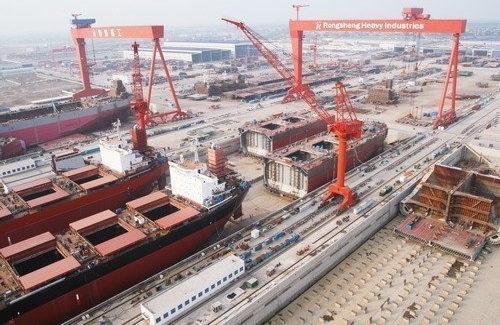
HONG KONG, July 5 (Reuters) - China Rongsheng Heavy Industries Group, China’s largest private shipbuilder, appealed for financial help from the Chinese government and big shareholders on Friday after cutting its workforce and delaying payments to suppliers.
Analysts said the company could be the biggest casualty of a local shipbuilding industry suffering from overcapacity and shrinking orders amid a global shipping downturn. New ship orders for Chinese builders fell by about half last year.
Hours after China Rongsheng made its appeal in a filing to the Hong Kong stock exchange, where the company is listed, Beijing vowed to bring about the orderly closure of some factories in industries plagued by overcapacity.
The statement by the State Council, or cabinet, laid out broad plans to ensure banks support the kind of economic rebalancing Beijing wants as it looks to focus more on high-end manufacturing. It did not mention any specific industries or companies and there was no suggestion it was referring to Rongsheng.
China Rongsheng said it was expecting a net loss for the six months that ended June 30 from a year earlier, according to the filing. It gave no figures.
Rongsheng shares plunged 16 percent to a record low in heavy turnover on Friday, leaving its market capitalisation at just under $1 billion. The Hang Seng Index climbed 1.9 percent. China Rongsheng is down 28.2 percent on the year.
In its filing, China Rongsheng said some workers had been made redundant, although it gave no numbers or timeframe for the losses. The company did not immediately respond to requests for more information.
China Rongsheng has said it won only two shipbuilding orders worth $55.6 million last year when its target was $1.8 billion worth of contracts. This year, it received orders to build two drilling rigs used in oil exploration, worth $360 million.
By contrast, another Chinese shipbuilder, Singapore-listed Yangzijiang Shipbuilding (Holdings) Ltd, has secured total orders of $1 billion in the first half, Barclays said.
While the Chinese shipbuilding industry faced “unprecedented challenges”, China Rongsheng’s board was confident management could ease pressure on working capital in the near future and maintain normal operations, the company said in the filing.
According to its December 2012 annual report, issued on March 26, China Rongsheng’s cash and cash equivalents fell to 2.1 billion yuan from 6.3 billion yuan a year ago.
“The group is ... actively seeking financial support from the government and the substantial shareholders of the company, and increasing its efforts in negotiations with its customers to maximise the collection of receivables,” China Rongsheng said in the filing.
A note from Macquarie Equities research said the statement highlighted the “severity” of China Rongsheng’s liquidity problems, adding this was not necessarily representative of the wider sector.
It said other listed Chinese shipyards were not as leveraged as China Rongsheng. The loan from Zhang was a surprise, it said, showing how badly the company needed cash.
“Rongsheng will need to address the problems immediately to reassure the market,” said Martin Rowe, managing director of Clarkson Asia Limited, a global shipping services provider.
The Chinese government has been trying to support the domestic shipping industry since the 2008 financial crisis, and local media reports said this week Beijing was considering policies to revive the shipbuilding business.
The holding orders of Chinese shipyards dropped 23 percent in the first five months of this year compared with a year earlier, according to the China Association of the National Shipbuilding Industry. New orders dropped to a seven-year low in 2012. ($1=6.1258 yuan) (Additional reporting by Yimou Lee and Twinnie Siu in Hong Kong and Keith Wallis in Singapore; Editing by Dean Yates)
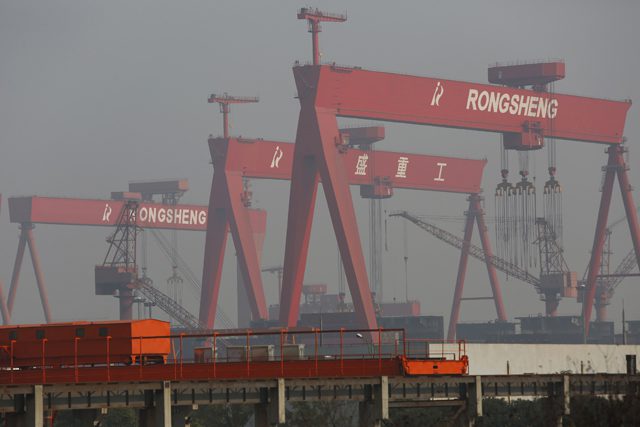
Since Beijing appears intent on telling investors it is serious about changing the investment-led growth model of the world’s second-biggest economy and controlling a credit splurge, it may seem like the writing is on the wall for China Rongsheng Heavy Industries Group.
Yet analysts say the government is more likely than not to judge that Rongsheng, which employs around 20,000 workers and has received state patronage, is too big and well connected to fail.
Supporting Rongsheng will not mean China’s economic reform plans are derailed, they say. Instead, it will mean reforms will be gradual and the government will cherry-pick firms it wants to support, which will exclude the small, private shipbuilders that have been folding in waves.
“Rongsheng is a flagship in the industry,” said Lawrence Li, an analyst with UOB Kay Hian in Shanghai. “The government will definitely provide assistance if companies like this are in trouble.”
Analysts say Rongsheng is possibly the largest casualty of a sector that has grown over the past decade into the world’s biggest shipbuilding industry by construction capacity. Amid a global shipping downturn, new orders for Chinese builders fell by half last year. In Rongsheng’s case, it won orders worth $55.6 million last year, compared with a target of $1.8 billion.
Rongsheng appealed for government aid on Friday, saying it was cutting its workforce and delaying payments to suppliers to deal with tightened cash flow.
In the prospectus for its initial public offer, Rongsheng said it received 520 million yuan of subsidies from the Rugao city government in the southern province of Jiangsu, where the company is based.
The state funds paid for research and development of new types of vessels, and were based in part on the “essential role we play in the local economy”, Rongsheng said.
China’s shipbuilding woes are partly of its own making. A global downturn in demand has hammered the sector since 2008, but a national obsession for global dominance in some industries led China to declare in the early 2000s that it wanted to be the world’s top shipbuilding nation by 2015.
A state-induced spike in the number of Chinese shipbuilders followed as the country led a three-fold rise in new global shipbuilding capacity in the past decade.
As the world’s largest shipbuilder, it had 1,647 shipyards in 2012, data from China Association of the National Shipbuilding Industry showed. Over 60 percent of its shipbuilders are based in Rongsheng’s province of Jiangsu.
Despite this, the government is providing support for the industry, a sign it will also support Rongsheng given its prominence in the sector, analysts said.
Analysts say what separates Rongsheng from many other companies are its connections with the government and state banks. Rongsheng’s Chief Executive Chen Qiang, for example, enjoys “special government allowances” granted by China’s cabinet, the firm’s annual reports say.
Rongsheng also said in its IPO prospectus that it has two five-year financing deals with Export-Import Bank of China that end in 2014 and in 2015, and a 10-year agreement with Bank of China starting from 2009.
After all, local government coffers will suffer the biggest blow if Rongsheng goes bust. The firm had 168 million yuan of deferred income taxes in 2012.
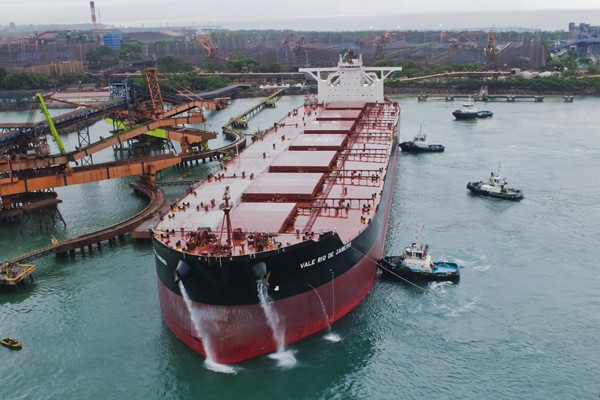
Rongsheng Heavy Industries Group Holdings Ltd"s shares have been suspended on the Hong Kong Stock Exchange after a media report said that the company cut 8,000 jobs in recent months.
Rather than building cheap bulk carriers, many Chinese shipbuilders are keen to upgrade their product focus from shipbuilding to offshore engineering products, such as offshore drilling rigs, wind turbine installation vessels and offshore pipe-laying vessels.
Last year, Rongsheng Offshore & Marine was established in Singapore to seek new market growth points. Its business segments include shipbuilding, offshore engineering, marine engine building and engineering machinery.
"Due to the low pre-payment rates and delayed deliveries, many shipbuilding companies in Shanghai, Nantong and Zhoushan are experiencing a shortage of capital. Banks are not willing to lend to shipbuilding companies because they"re fully aware of how sluggish the business is. Shipbuilding is listed as a high-risk industry by banks," Meng said.

The shipyard of China Rongsheng Heavy Industries Group Holdings Ltd in Rugao, Jiangsu province. The company will generate HK$2.55 billion ($326.4 million) in a share sale in the next six months and HK$3.23 billion thereafter. [Provided to China Daily]
China Rongsheng Heavy Industries Group Holdings Ltd, the private-sector shipbuilder that had sought financial assistance, has secured cash for restructuring and announced changing the company"s name as it shifts focus to energy.
Shifting its focus to oil will need a lot more funds, which Rongsheng already struggled to get as a shipbuilder, said Francis Lun, chief executive officer of Geo Securities Ltd.
The company had sought help from the government to benefit from a rebound in China"s shipbuilding industry after cutting its workforce and running up huge debts amid a global downturn in orders.
In September the Jiangsu shipyard unit was listed among 51 shipbuilding facilities in China deemed worthy of policy support as the industry grapples with overcapacity.
Rongsheng said it has now received the results of an appraisal by an independent assessor, which will be used as the basis for the restructuring in which it also plans to change its name to China Huarong Energy Co to more accurately reflect its expansion and new business scope.
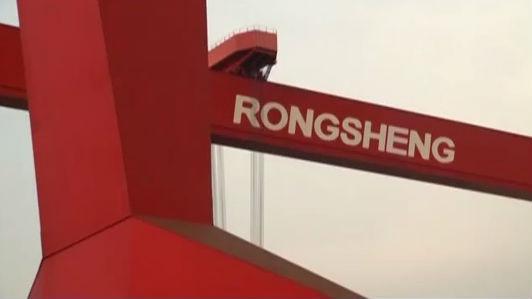
(18 May 2014, Hong Kong) - China Rongsheng Heavy Industries Group Holdings Limited ("China Rongsheng Heavy Industries" or the "Group"; stock code: 01101.HK), a large heavy industries group in China, has signed a shipbuilding contract for a series of
64,000 DWT bulk carriers with a European shipowner. The shipbuilding contract will increase the total number of vessels involved between the two parties to 36. Including options, the shipbuilding contract is worth approximately USD1 billion.
The shipbuilding contract involves not more than 36 of 64,000 DWT bulk carriers, which consist of 24 confirmed orders and 12 options. Among the 24 confirmed orders, 18 of them are existing orders with better contractual terms after renegotiation, while the remaining 6 are new orders. These vessels are scheduled to be delivered within the next three years. The 64,000 DWT bulk carrier is the smallest bulk carrier ever built by the Group in terms of its tonnage.
China Rongsheng Heavy Industries Group Holdings Limited and its subsidiaries are a leading diversified large heavy industries group in China. Our headquarters is located in Hong Kong, with manufacturing bases in Nantong (Jiangsu Province) and Hefei (Anhui Province). Rongsheng Offshore & Marine was established in Singapore to promote our offshore engineering business. Our business segments include shipbuilding, offshore engineering, marine engine building and engineering machinery. According to Clarkson Research, China Rongsheng was the largest non-state-owned shipbuilder in the PRC in terms of orders on hand measured by DWT as at the end of December 2013. The Group operates the largest shipyard in the PRC and is a global leader in the manufacture of very large ore carriers.
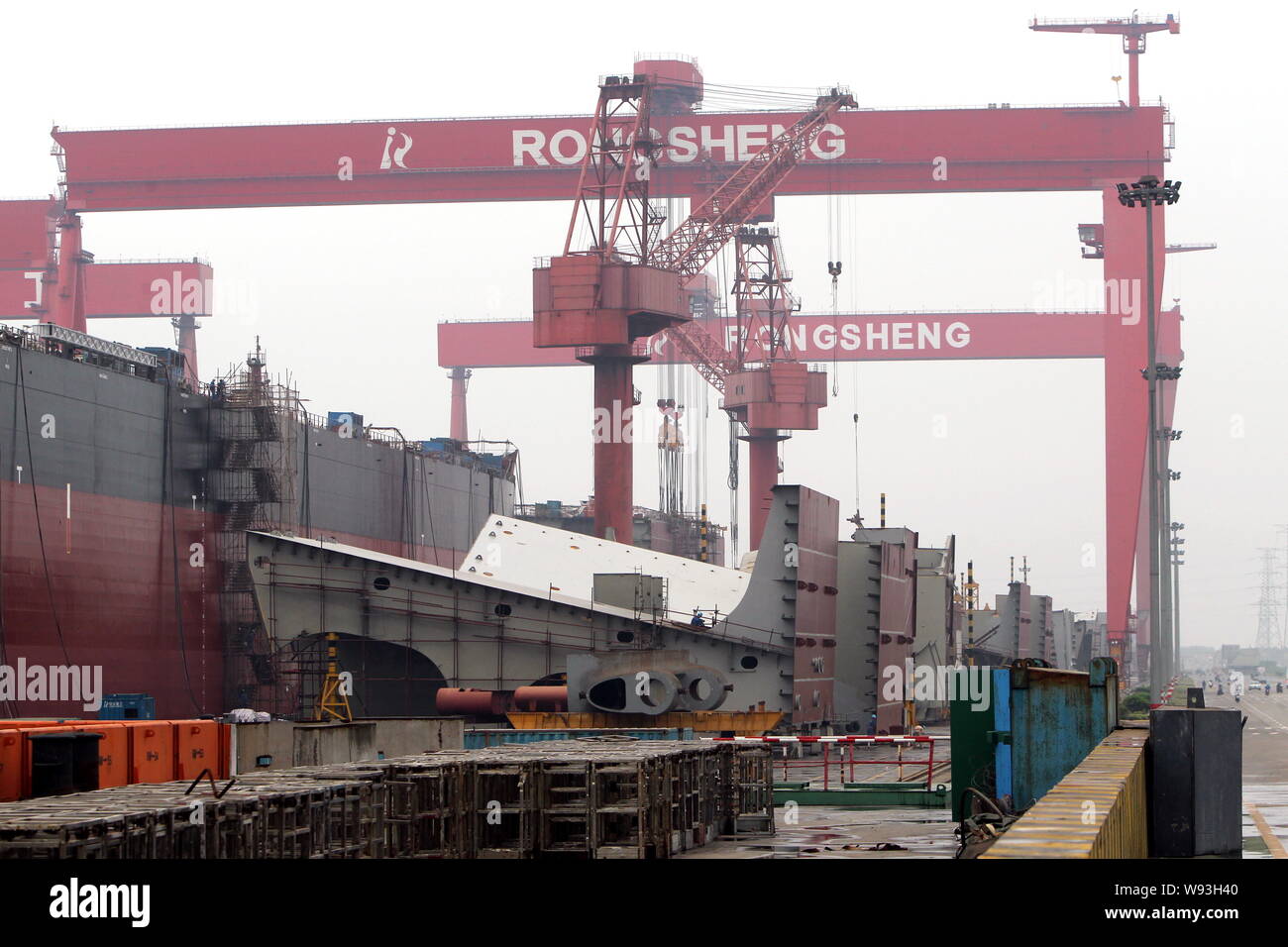
In 2008, Vale placed orders for twelve 400,000-ton Valemax ships to be constructed by Jiangsu Rongsheng Heavy Industries (RSHI) in China and ordered seven more ships from South Korean Daewoo Shipbuilding & Marine Engineering (DSME) in 2009. In addition sixteen more ships of similar size were ordered from Chinese and South Korean shipyards for other shipping companies, and chartered to Vale under long-term contracts. The first vessel was delivered in 2011 and the last in 2016.
The first Valemax vessels were ordered on 3 August 2008 when Vale signed a contract with the Chinese shipbuilder Jiangsu Rongsheng Heavy Industries (RSHI) for the construction of twelve 400,000-ton ore carriers. The development had reportedly started in 2007.
The Chinese shipbuilder"s ability to deliver any of the very large ore carriers ordered by Vale in time was doubted already before the first ship was built.Valemax vessels will be delivered from the Chinese shipyard in 2011 instead of the planned six due to delays in construction.Vale China) was delivered before the end of the year. Furthermore, later reports claimed that the ships ordered by Vale had a capacity of only 380,000 tons even though according to the Det Norske Veritas database entries all Chinese-built ships have a deadweight tonnage in excess of 400,000 tons and in the past Vale has referred to the ships ordered from Rongsheng as "400,000-ton" vessels. The reduction in cargo capacity, at least on paper, may have been due to the reluctance of Chinese officials to accept the 400,000-ton ships to Chinese ports.
In April 2012, it was reported that Vale had refused delivery for three Valemax ships recently completed by Jiangsu Rongsheng Heavy Industries. This was seen as a move against the Chinese officials who have not allowed the 400,000-ton ships to dock in Chinese ports.
On 26 October 2009,Valemax vessels from the South Korean shipbuilder Daewoo Shipbuilding & Marine Engineering (DSME) for $460 million.Valemax vessels.Valemax class ore carrier, Vale Brasil, on 31 December 2010 and delivered the ship to Vale in March 2011.
In addition to the ships Vale ordered for itself, more ships of similar size were to be built for other shipping companies and chartered to Vale under exclusive long-term contracts. Eight very large ore carriers were ordered from the South Korean shipbuilder STX Offshore & Shipbuilding in Jinhae, South Korea (STX Jinhae), and Dalian, China (STX Dalian). The shipping company, STX Pan Ocean, signed a 25-year contract with Vale in 2009.Valemax vessels built by STX, 374,400 tons, is slightly smaller than that of the similar ships built by DSME and RSHI.
The last Valemax vessel to be built by STX, originally named Vale Ponta da Madeira but later referred to by its yard number "STX Dalian 1707", was launched sometime in 2015. However, the vessel was never finished and instead was listed as "for sale" in an unfinished state. In March 2016, it was reported that the last of the original 35 Valemax vessels to be built had been sold for just $16.8 million.Shanhaiguan Shipbuilding and named Sea Ponta da Madeira.
On 30 April 2007 Berge Bulk signed a contract with the Chinese shipbuilding company Bohai Shipbuilding Heavy Industry for the construction of four 388,000-ton very large ore carriers. Although initially scheduled for delivery in 2010, the first vessel, Berge Everest, was delivered on 23 September 2011.Berge Aconcagua on 15 March 2012Berge Jaya on 12 June 2012.Berge Neblina, was initially also scheduled to be delivered in 2012, but entered service on 4 January 2013.
In March 2016, it was reported that three Chinese companies China Ocean Shipping (Group) Company (COSCO), China Merchants Energy Shipping and Industrial and Commercial Bank of China (ICBC) had ordered ten Valemax vessels each from four Chinese shipyards with a total price of US$2.5 billion.Valemax ships ordered by China Merchants Energy Shipping would be built by Shanghai Waigaoqiao Shipbuilding (4 ships), Qingdao Beihai Shipbuilding (4 ships), and China Merchants Group-controlled China Merchants Heavy Industry (Jiangsu) (2 ships).Yangzijian Shipbuilding while the remaining four would be awarded to Qingdao Beihai Shipbuilding.Valemax vessels, Yuan He Hai, was delivered on 11 January 2018
Vale Sohar, built by Jiangsu Rongsheng Heavy Industries (RSHI), awaiting delivery for Oman Shipping Company in Nantong, China, in September 2012. Note the minor differences to the South Korean-built Vale Rio de Janeiro.
Like most modern bulk carriers, Valemax vessels are powered by a single two-stroke low-speed crosshead diesel engine directly coupled to a fixed-pitch propeller. The ships built by DSME and STX in South Korea are powered by 7-cylinder MAN B&W 7S80ME-C8 and 7S80ME-C engines, respectively, and the ships built by RSHI and Bohai Shipbuilding Heavy Industry have Wärtsilä 7RT-flex82T and 7RT-flex84T engines, respectively.maximum continuous rating of around 29,000 kW (39,000 hp) when turning the 10-metre (33 ft) propeller at 76–78 rpm, giving the ships a service speed of around 15 knots (28 km/h; 17 mph) while burning almost 100 tons of heavy fuel oil per day.cargo ton-mile are very low and thus the Valemax vessels are in fact among the most efficient long-distance dry bulk carriers in service – Vale has reported a 35% drop in emissions per ton of cargo carried in comparison to older ships.
Luiz Inácio Lula da Silva, the former president of Brazil, also publicly criticized Vale"s former CEO Roger Agnelli for the decision of ordering ships from Asian shipyards instead of building them in Brazil, where Lula da Silva has been trying to revitalize the shipbuilding industry to create more jobs and increase local demand for steel and other products. Agnelli, who later left his position following continued criticism, replied that the Brazilian shipyards did not have the capacity to build such ships and stated that during the past few years Vale had commissioned 51 vessels from Brazilian shipyards.
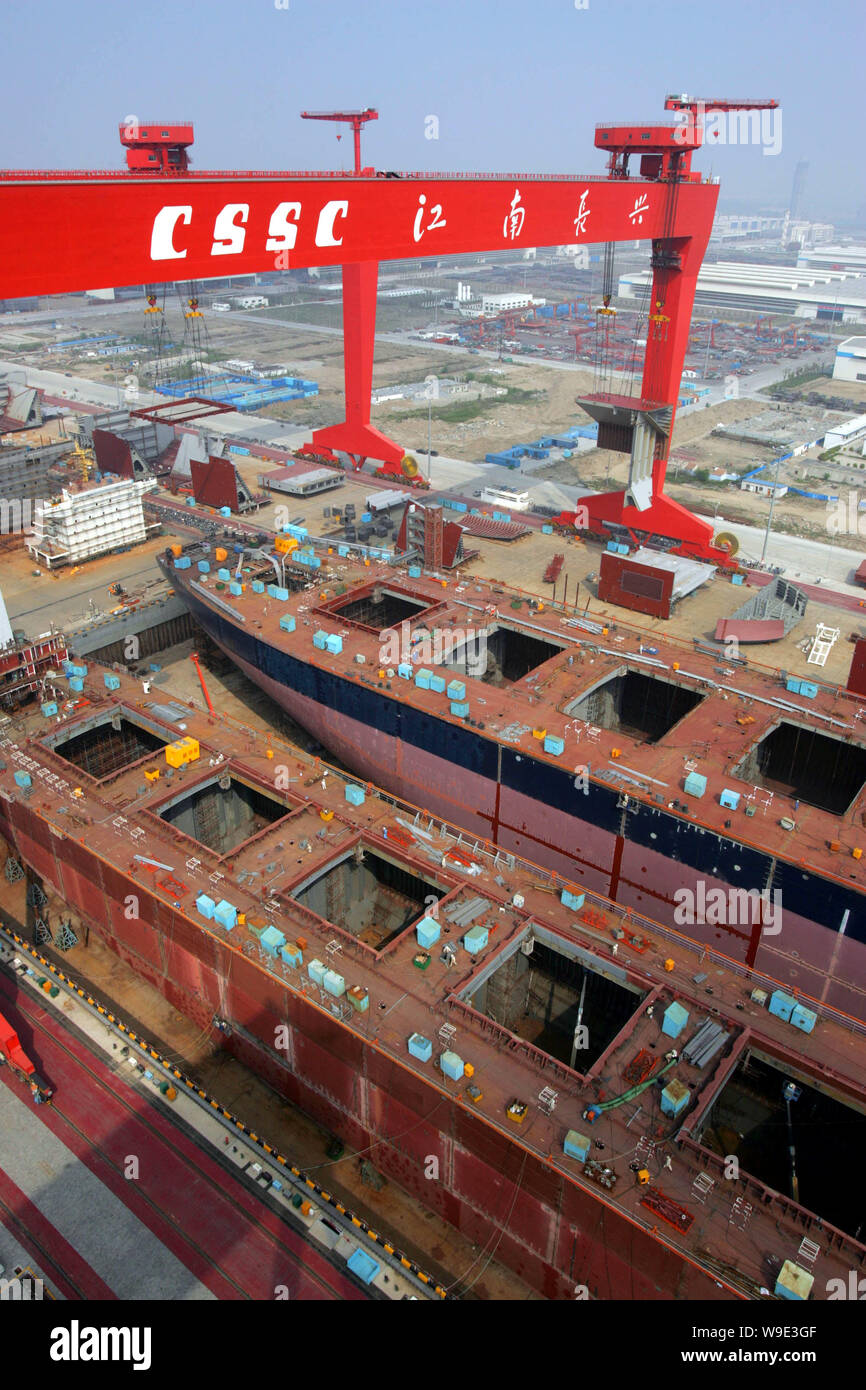
Embattled China Rongsheng Heavy Industries needs restructuring and further cash injections to turn the company around despite a HKD 1bn ($128.9m) bonds issue, experts say.
Shipbuilding players following the Hong Kong-listed company claim it is still hard-pressed for cash despite the three-year convertible bonds launched over Christmas, which saw businessman Zheng Kin Ming of Shunfen take a stake in the shipbuilder.
“2014 will continue to be a challenging year for Rongsheng and the level of difficulty it faces will depend on how much it can raise to tide it over its financial troubles,” said a shipbuilding player.

One shipbuilding expert said Yangzijiang’s interest in acquiring Jinhai’s half-complete newbuilding mirrors a move it made three years ago in entering the suezmax tanker sector.
Yangzijiang paid about $10m to take over the half-built, 157,000-dwt newbuilding that was dry-docked at Jiangsu Rongsheng Heavy Industries. The suezmax tanker was originally ordered by John Fredriksen’s Frontline in 2012, but Rongsheng stopped building the ship when the yard group suffered financial problems.
“There are complex issues at Jinhai…the shipyard is not bankrupt, but it has stopped shipbuilding constructions for almost three years and has rented out its dry docks to shiprepairing company.
The ownership of Jinhai appears to be a question to many shipbuilding players. The shipyard is a subsidiary of troubled HNA Group, which went under the administration of the Hainan government early this year.
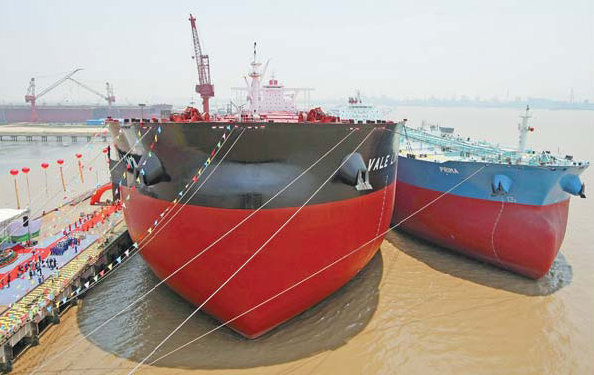
In 2004, when the government decided to promote him from his position of president of China"s top yard Shanghai Waigaoqiao Shipbuilding (SWS) to lead the China State Shipbuilding Corporation in Beijing, he opted to go private.

The workers from the Nantong shipyard owned by the troubled Rongsheng Heavy Industries have been on strike since Sunday after the company announced that they had to go on forced leave for a week.
The workers" strike comes after Rongsheng reported a loss of 49 million yuan (U.S.$8 million) in the first quarter of 2013, citing "the most difficult time yet" in the two recent quarters, shipping website SinoShip News said.
Fang said the company had been badly hit by slowing demand in the shipbuilding sector, and that some workers" salaries hadn"t been paid for as long as four months at a time since demand began to weaken last October.
Lei Dong, secretary to Rongsheng"s president, told the paper the layoffs are not a sign of financial trouble at the shipbuilder, but were rather the result of "restructuring," saying more than half the employees who were laid off were subcontractors and the remainder full-time employees.

Chinese shipbuilder Rongsheng expects to deliver this year the majority of the 12 very large ore carriers (VLOCs) ordered by Brazilian mining giant Vale(NYSE: VALE) for US$1.6bn, the former"s CEO Chen Qiang was reported as saying by international press. Rongsheng plans to deliver two VLOCs originally due last year to Vale in the next two months and all but one of the remaining vessels by late-2012. The last carrier will be delivered in 2013, according to press reports. Vale"s VLOCs, also known as Valemaxes, can transport 400,000t of iron ore. The miner also has an order for seven more VLOCs with South Korea"s Daewoo Shipbuilding & Marine Engineering for US$748mn. The vessels were commissioned in an effort to lower international freight costs, which had been weighing on margins. In addition to the 19-strong fleet, Vale has ordered another 16 ships with the same dimensions that will operate exclusively for the company in long-term contracts with shipbuilders. ACCESS TO CHINA In early February China"s transport ministry announced a ruling that restricts ports" right to accept many of these vessels, prompting analysts to speculate that Vale would no longer be able to make full use of its VLOCs. Although Vale has said its Asia shipments will not be affected by the ruling, the company is reportedly in talks with Chinese authorities to obtain access for its VLOCs at the Asian country"s ports. Rio de Janeiro-based Vale is the world"s largest iron ore producer and exporter.




 8613371530291
8613371530291